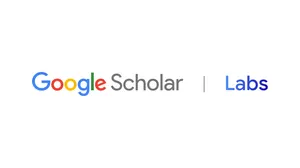Improve student writing with originality reports and rubrics in Classroom

Editor’s note: This week, we’re at BETT in London, where you can visit us at booth SE30. If you’re #NotAtBett, follow along on Twitter and Facebook.
As students grow, their learning needs change. At Google, we're committed to supporting learners throughout their development with tools for student-directed learning and personalized feedback.
That’s why today, we’re making our latest Classroom tools, originality reports and rubrics, available to everyone who uses G Suite for Education.
Empowered learning and accelerated grading
Today’s students have more information at their fingertips than ever before. As part of Google’s mission, we are invested in making the world’s information universally accessible and useful, especially for curious students. We want to make sure students have the tools to not only find information, but also learn from it and make it their own.
Educators also face a big challenge in helping students keep their work authentic, and they don’t always have the tools to easily evaluate which passages are students’ own. Often the best tool available to instructors is to manually copy and paste passages into Google Search to check if work is original. We’re simplifying the process by integrating Search into our assignment and grading tools.
Originality reports are a new assignment feature that can help students improve their writing, while also providing instructors with a fast and easy way to verify academic integrity without leaving the grading interface. When instructors turn on originality reports for an assignment, students can check for missed citations or poor paraphrasing before they turn something in, and instructors automatically get an originality report to view while grading.
Over the next month, originality reports will roll out to all Classroom instructors whose language is set to English. With this launch, instructors can enable originality reports on three assignments per class for free. Instructors whose admins have purchased G Suite Enterprise for Education get unlimited access to originality reports, as well as other premium tools.
Upcoming features
We’re also announcing two new betas to originality reports for the top-requested features from our instructors. With student-to-student matches, available to G Suite Enterprise for Education institutions, we’re expanding originality reports to include checks against previous student submissions. With this, instructors can receive originality reports with student-to-student matches within the same school along with the usual web matches. This allows schools to have their own database of student submissions—owned by your school, not Google. Once this feature is enabled for your school, student submissions on assignments that use originality reports will automatically be added to the school’s repository and administrators will be able to add or delete files manually. There’s also a beta for international languages to enable originality reports for those whose language is set to Spanish, Portuguese and French.
If you use another learning management system, originality reports are also available through our Assignments LTI tool which is currently in beta--stay tuned for availability updates later this year.

Enhanced student feedback
Educators often spend a lot of time grading assignments and providing constructive comments to help students grow. They often use rubrics as scoring frameworks to make it easier to evaluate student assignments, set clear expectations and provide actionable feedback.
That’s why we launched a beta for rubrics in Google Classroom last June. This streamlined how rubrics are created in Classroom to help educators provide additional transparency around students’ grades. Tom Mullaney is a high school Digital Learning Coach in North Carolina who’s enrolled in the beta program, and he knows how helpful rubrics can be. “[Rubrics enable] teachers to give much more detailed feedback than just a text comment. Students can now see both what is expected of them and how they did in meeting expectations,” Mullaney says. “Rubrics save teachers times in two ways: You can reuse rubrics and you can also duplicate criterion.”
Thanks to all of the feedback and feature requests from our beta, today we’re making rubrics available to everyone who’s using Classroom and Assignments.
With the new rubrics feature, educators can now create a rubric while they create an assignment, reuse rubrics from a previous assignment rather than having to create one from scratch. They can also export and import Classroom rubrics to share them with other instructors, as well as grade student work with a rubric from both the student listing page and Classroom’s grading view, where instructors can select rating levels as they review the assignment.







